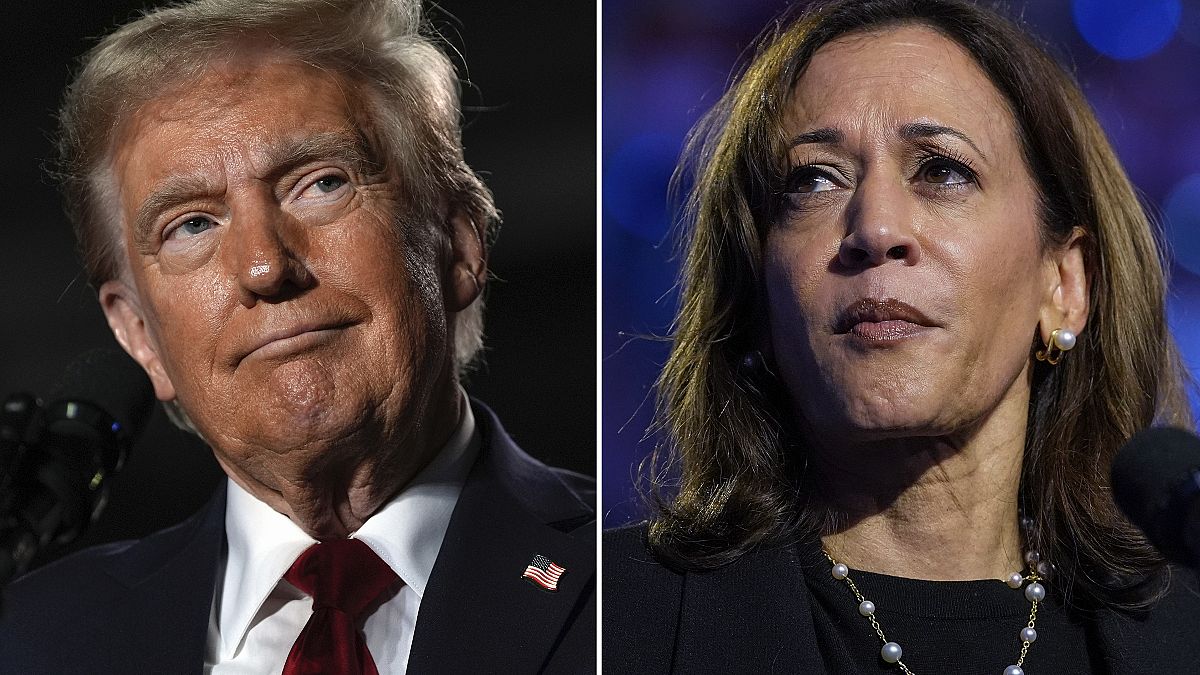A constitutional amendment more than two centuries old determines the choice of winner in case of a draw.
Kamala Harris and Donald Trump are fighting down to the last vote to gain the upper hand in tomorrow’s election. There’s a remote possibility that the US poll could end in a draw, however.
This concerns the machinery of the US Electoral College, the winner-takes-all system that determines which presidential candidate will win the White House.
The Electoral College comprises 538 votes, distributed in varying proportions among the fifty states plus the District of Columbia. A tie between two presidential candidates is therefore theoretically possible.
Harris and Trump could each receive 269 electoral votes, resulting in a complete draw scenario, with both candidates unable to achieve the majority of electoral votes required to become president.
Similar stalemates have occurred twice in US history, in 1800 and 1824.
What happened when there was a tie in the past?
In the 1800 election, Thomas Jefferson’s Democratic-Republicans defeated the incumbent Federalist President John Adams.
At that time, presidential candidates had a “running mate” from a different state, similar to today’s candidates for vice president. The electors had to cast two votes each: the candidate with the most votes would become president, while the candidate with the second-most votes would become vice president.
However, the Democratic-Republicans did not coordinate well, resulting in their candidate for president (Jefferson) receiving the same number of votes as their candidate for vice president (Aaron Burr).
The election was therefore decided by the House of Representatives using a one-state, one-vote rule after a long deadlock that nearly resulted in a military confrontation, as Sanford Levinson, a professor at the University of Texas Law School, has noted.
For this reason, the 12th Amendment was introduced, which still regulates the election of the US president. It clarifies that electors “shall name in their ballots the person voted for as President, and in distinct ballots the person voted for as Vice President,” to avoid any possible tie between candidates from the same party.
However, there remains the possibility that no candidate receives a majority of the total number of electors appointed—currently, that crucial threshold is 270.
This actually happened in 1824, when Andrew Jackson received 99 votes, John Quincy Adams 84, William Crawford 41, and Henry Clay 37. All of these candidates were from the same Democratic-Republican political party, which was split into regional factions.
The 12th Amendment states that in such cases, the House of Representatives shall immediately choose the president by ballot from the top three choices of the electors. Votes are taken by state, with each state having one vote and a simple majority required.
This means that Wyoming, the smallest state in the US with fewer than 600,000 people, would have the same say in choosing a new president as California, which has almost 40 million residents (even though Wyoming appoints only three electors and California 54).
Additionally, the choice of the new president would depend on the composition of the House of Representatives, which is set to be voted on in parallel with the presidential elections.
How likely is a tie?
While a tie is unlikely, it is still a possibility to consider, with various scenarios outlined by the website 270toWin.
One scenario is that Trump wins Pennsylvania and Georgia, while Harris secures victories in Wisconsin, Michigan, Arizona, Nevada, and one electoral vote in Nebraska, which alongside Maine is the only state that splits its allocation of electors.
Another scenario, even more unlikely, is that Harris wins all the states Biden won, plus North Carolina, which current polls indicate could go to Republicans. If Trump then reclaims Michigan, Pennsylvania, and Wisconsin, and also wins Nevada for the first time, the outcome would be a 269-269 tie.
This would trigger a “contingent election,” with the House of Representatives tasked with deciding the US president for the first time in two centuries, requiring a simple majority of 26 states to elect the new commander-in-chief.
With the country sharply divided, newly sworn-in US congress members would face immense pressure and, in some cases, might have to choose between backing their party candidate or the one who received the most popular votes in their own state (there is no requirement for state delegations to honour the winner of their state’s vote).
This situation would likely unfold on 6 January, right after Congress determines that no candidate has a majority, according to an analysis by the Congressional Research Service.
Even more surprisingly, the tie scenario could lead to cohabitation between a Republican president and a Democratic vice president or vice versa.
Indeed, according to the 12th Amendment, in the event of no majority, the US vice president is chosen by the Senate from the two candidates with the highest number of electoral votes, with each senator entitled to one vote (the US Senate has 100 members, with each state electing two).
Finally, the Senate could select a vice president even if the House is deadlocked in the election of the president. So, if a president is not selected by Inauguration Day, 2o January, the newly chosen vice president would serve as acting president. This is a scenario that no one in the US can envision as of today.

